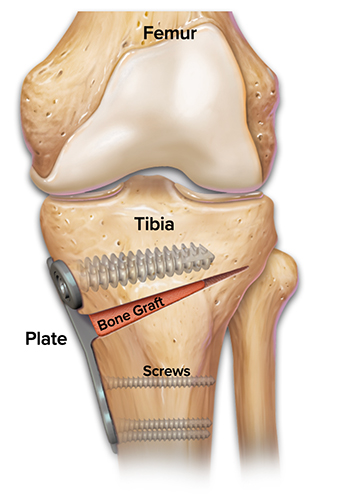Knee Malalignment Surgical Treatment
For patients suffering from malalignment of the knee who have failed conservative treatment, surgical intervention is a reasonable option to consider. To correct malalignment, Dr. Chahla will discuss the option of an osteotomy. An osteotomy is a surgical procedure that involves cutting and reshaping a bone. The goal of an osteotomy is to change the alignment or position of the bone to correct deformities, redistribute weight-bearing forces, preserve overall joint health, and improve joint function. The type of osteotomy performed will depend on the type of malalignment that the patient is suffering from. In addition to the osteotomy, Dr. Chahla will also perform a diagnostic knee arthroscopy to address any concomitant meniscal or cartilage injuries as well. See below for the most common types of osteotomies performed to correct varus and valgus malalignment of the knee.
When knee malalignment causes persistent pain or leads to joint deterioration, surgical intervention may be necessary to correct alignment and restore function. Procedures such as knee osteotomy or partial knee replacement can help realign the joint, relieve symptoms, and prevent further damage. Dr. Jorge Chahla is a highly skilled orthopedic knee surgeon specializing in advanced surgical techniques for knee realignment. If non-surgical options have not provided sufficient relief, Dr. Chahla can determine the best surgical approach to help you regain mobility and improve knee stability. Contact his office in Chicago, Naperville, or Oak Brook to schedule a consultation and discuss your surgical treatment options.
At a Glance
Dr. Jorge Chahla
- Triple fellowship-trained sports medicine surgeon
- Performs over 700 surgeries per year
- Associate professor of orthopedic surgery at Rush University
- Learn more

